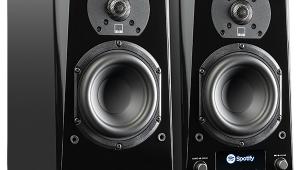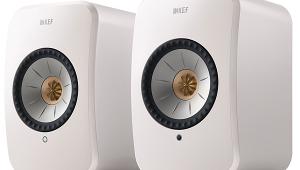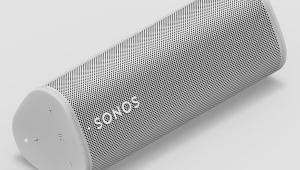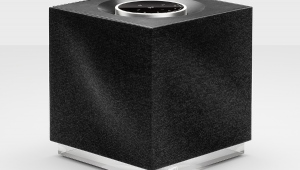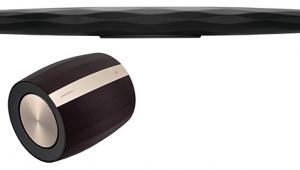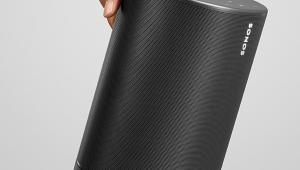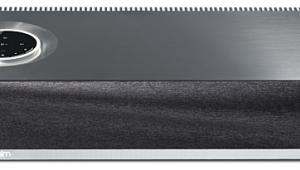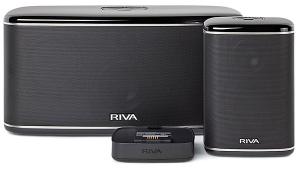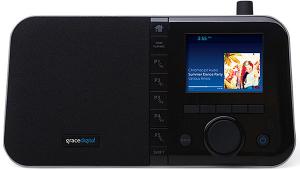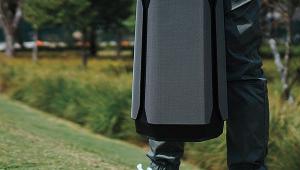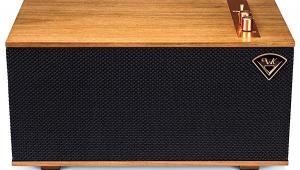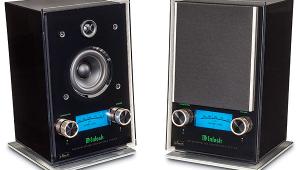Review: Jawbone Big Jambox Page 2
Measurements
Frequency response
83 Hz to 20 kHz ±13.8, ±7.1 dB to 10 kHz (L+R avg 0-30°)
Bass limit
80 Hz at 94.2 dB
To measure the quasi-anechoic frequency response of the Big Jambox, I set it atop a 2-meter stand and placed the microphone at a distance of 1 meter. (Quasi-anechoic measurements eliminate reflections from surrounding objects to simulate measuring in an anechoic chamber.) I then ran a ground-plane measurement at 1 meter to get the bass response. To create the graph shown here, I spliced the bass response to the average of quasi-anechoic measurements of the left channel only taken at 0°, ±10°, ±20°, and ±30°. I used a Clio FW analyzer in MLS mode for the quasi-anechoic measurements and log chirp mode for the ground plane sweep, feeding the test signals into the Big Jambox’s 3.5mm line input. The quasi-anechoic measurements were smoothed to 1/12th octave, while the ground plane measurement was smoothed to 1/3rd octave. The blue trace shows the 0° on-axis response, while the green trace shows the averaged response.
The Big Jambox’s tonal balance looks fairly even from bass to mids to treble, but obviously the response is jagged in places. There seems to be a bit of a midrange emphasis around 1.4 kHz, but it’s mild. As you can see, the on-axis and averaged 0°-30° response are almost identical, indicating broad dispersion — an important characteristic for a speaker that’s supposed to fill a room with sound. The original Jambox measures better, thanks to the extended high-frequency response of its smaller drivers, but of course it can’t play as loud or as low.
I also tried measuring the frequency response at 0° with and without LiveAudio activated. As expected, the response on-axis was much less smooth with LiveAudio’s crosstalk cancellation; I’ve seen similar results from similar technologies such as Polk’s SDA. But while a single measurement microphone sees these results as uneven, your two ears add them into something that sounds fairly smooth. The curve did show that LiveAudio appears to have significant effects up to about 3 kHz.
To gauge the Big Jambox’s bass output, I used CEA-2010 measurement technique at a distance of 1 meter. It does deliver substantial response down to 80 Hz, which is very good for a device of its size.
Bottom line
Although I stressed before that the Big Jambox isn’t just a bigger version of the Jambox, in many ways it is. It has the same winning ergonomics, the same great functionality, and the same unmatched styling. For my taste and travel habits, I prefer the size and the sound of the original Jambox, but if I was headed off for a ski vacation with my family, I’d prefer to have the Big Jambox along for the ride.
What I just took 1,800 words to say was put more economically and eloquently by my girlfriend, whose opinion of the Big Jambox was simply, “It’s nice having a speaker in the hotel room.”
